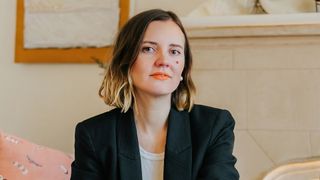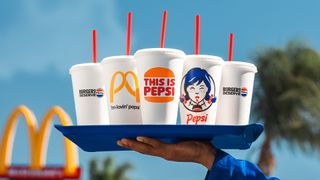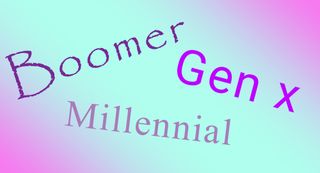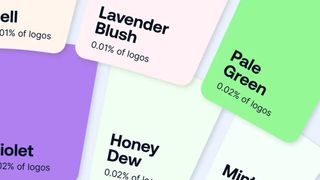Chuck Anderson
“Quite frankly, there’s a place in the world for things that are just eye candy.” Chuck Anderson reassures Mark Penfold that it’s okay to make the world a better looking place
Just like the glowing exuberance of his artwork, Chuck Anderson is absolutely charming - disarmingly so, in fact. Looking back over a client list which includes some of the world's biggest brands, he remarks: "The cool part is that there's an interesting story behind every one of those clients." What he's most proud of is the connection he makes with people, either through his work or in person.
Once you appreciate this, the meteoric path his career has taken since that first breakthrough job for ESPN magazine back in 2004, right up to his recent work for Windows 7, seems to be almost inevitable.
While he's more than capable of producing images that fizz with a kind of mysterious energy, Anderson is just as happy making stuff look cool. "I don't see that as bad," he says, "or as meaning that the work is shallow." What matters is the result, and ideally the result for him is the building of a relationship.
Computer Arts: What was it like working with Microsoft on the art for Windows 7?
Chuck Anderson: I was intimidated at first - I thought it would be very bureaucratic. But they were fun to work with; that was a real revelation. I've worked with smaller companies and had to go through more crap. Their only direction was that the Windows logo had to be in the middle. The rest was up to me.
CA: How did that job come about?
CAN: Jobs come up in different ways, but for the most part I'm surprised by getting a random email. This agency, Landor, contacted me saying they had a job for 'a major software company'. We had to sign an NDA and everything, then they said they were interested in me doing the packaging, desktop and login screens for Windows 7. I was like, 'Holy shit! This is really big.' The whole job lasted about two to three months, and now my artwork is in front of hundreds of millions of people.
CA: Microsoft are just the latest in a line of impressive clients. How do you do it?
CAN: Any time I complain about anything in my life, I have to stop and remind myself what great opportunities I've had. But those clients didn't just fall into my lap, I've worked very hard. I'm very proud of the work I've put in to get to this point. The cool part though is that there's an interesting story behind every one of those clients, and I'm proud to have made friends with the art directors that I work with.
CA: Have you always been your own boss?
CAN: I graduated from high school in 2003, and had started NoPattern when I was in high school, at about the age of 17. It was just a place for my personal work. When I graduated I had a couple of odd jobs locally but eventually I quit those - I was getting more and more freelance work. I never ended up getting hired anywhere. I've never worked in a creative office with anyone else; I've had to teach myself everything about business.
CA: How did you get your first break?
CAN: I would spend tons of time in book stores looking at old magazines. I was about 18. I would see illustrations and designs and they would have a credit for the artist, and I thought that looked like an interesting way to work.
So I'd look up the art director's name, then I'd go home and email them and introduce myself. If I couldn't find an email address I'd just make up 15 different combinations of email address based on their name and hope that I got 14 error messages back. That's how I got work with ESPN. I just threw it out there, guessed the guy's email and got it.
CA: That shows real determination.
CAN: I was dead set on trying this out. I had nothing to lose; I didn't have money for college; my parents didn't have money for me. I didn't have a reputation I could hurt by soliciting people, so I thought I may as well introduce myself, be nice and see if anybody wants to work with me. ESPN was a real turning point for both my portfolio and my confidence. It was the first time I felt like I was doing something right. I thought I could work for any magazine after that.
CA: Were you still finding your style then?
CAN: That was an experimental development stage for me. I was doing a lot more with watercolours, scanning it in and doing more collage. I still do that, but the name NoPattern was very much devised so I never had to lock myself to one thing. Though I've become known for one prominent style, I feel free to experiment in whatever I want to do without feeling I'm going to disappoint.
CA: Do you still work with traditional analog media?
CAN: I use a Wacom tablet for 99 per cent of my work, but there's something to be said for growing up in a time when there were no computers and learning how to draw well. If I didn't know how to draw well I don't think I'd have the same kind of fluid motion I have when I'm using the tablet. That's a perfect mix of analog and digital.
CA: When did you start working with light and colour?
CAN: I don't remember when I started using the glows, but the SVSV project in late 2004 was where I felt like I was really starting to perfect that style. It's funny - looking back I don't think I've done anything as good in that style since then.
CA: But you've improved technically, you'd say?
CAN: Any smart designer will tell you there's always a lot to learn. Nothing is ever perfect. Look at what you do as being a craft, something which has technical merit. The problem I see with integrating light into photography is that people tend to be a little lazy and just drop it on top, rather than think of what happens to the subject matter if light is added to the image. It should be believable to a degree. Once your tools become second nature, that's when the fun starts.
CA: Can you tell us how you go about making colour choices?
CAN: They're somewhat random. I love using an intense reddish-pink - it's not too feminine or too blood red, it's kind of in-between. And then blues, juxtaposed next to each other. It always creates a very interesting palette, when you place opposing colours next to each other.
I didn't study colour theory or design or anything, so I'm completely self-taught. I got a copy of Photoshop when I was 14 and started experimenting very early on; I just got hours and hours of practice under my belt. I might not have made such interesting choices if I had gone to school.
CA: Which artists have been major influences on you?
CAN: There are tons! it's hard to know where to start. A lot of the artists I'm inspired by do work that looks nothing like mine. Mark Romanek, the music video director, for instance. He has such an amazing eye for composition and light. His colour is very good in everything he does - something about the way he uses light and frames his shots is incredibly inspiring. He seems to do it so effortlessly, it's almost scary. Joshua Davis has been inspirational in many ways, especially for his creativity. While I was in high school I found his work really intriguing, and since then we've also worked together. It's great to admire his work, but to collaborate and have him be so encouraging on a personal level is amazing.
CA: What direction are you moving in creatively?
CAN: One of the big things at the moment is doing more of my own photography, or personal work in general. One of the big struggles for artists who do client work is staying focused enough to do personal projects. Fortunately my clients come to me for my experimental side. I want to do more books, too. I've had a dream for the last couple of years of creating a publishing house, even if it's just for small and cheaply produced magazines.

Thank you for reading 5 articles this month* Join now for unlimited access
Enjoy your first month for just £1 / $1 / €1
*Read 5 free articles per month without a subscription

Join now for unlimited access
Try first month for just £1 / $1 / €1
Get the Creative Bloq Newsletter
Daily design news, reviews, how-tos and more, as picked by the editors.
The Creative Bloq team is made up of a group of design fans, and has changed and evolved since Creative Bloq began back in 2012. The current website team consists of eight full-time members of staff: Editor Georgia Coggan, Deputy Editor Rosie Hilder, Ecommerce Editor Beren Neale, Senior News Editor Daniel Piper, Editor, Digital Art and 3D Ian Dean, Tech Reviews Editor Erlingur Einarsson and Ecommerce Writer Beth Nicholls and Staff Writer Natalie Fear, as well as a roster of freelancers from around the world. The 3D World and ImagineFX magazine teams also pitch in, ensuring that content from 3D World and ImagineFX is represented on Creative Bloq.




